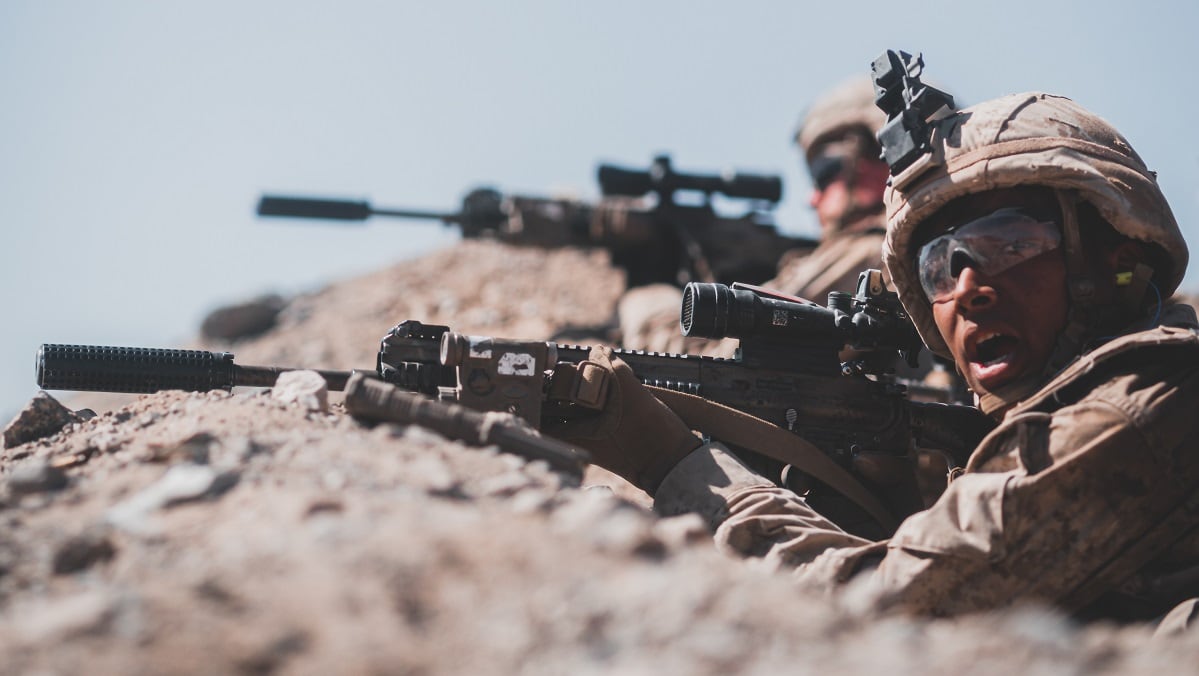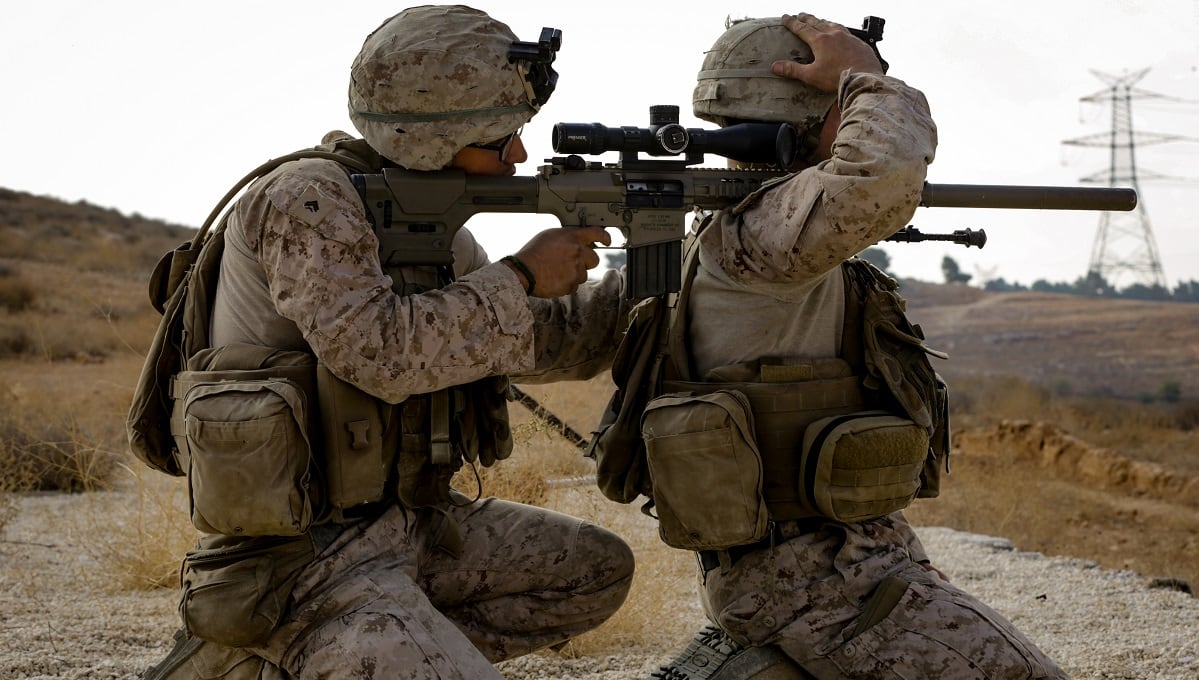A battalion from one of the oldest continuously active Marine regiments will conduct experiments in the next two years that could define how the infantry battalion operates for decades to come.
That unit is 3rd Battalion, 4th Marine Regiment, out of the Marine Corps Air Ground Combat Center at Twentynine Palms, California.
And it’ll be doing that work with a reconfigured, slimmer battalion of 811 Marines and 69 Navy support personnel, for a total manning of 880 personnel, according to figures provided by Marine officials.
That’s down from the standard battalion requirement of 965 Marines and sailors prior to Force Design 2030 efforts that kicked off in 2019, and the current 877 Marines and sailors that are currently the infantry battalion standard manning, officials said.
But the figure remains higher than one of the three experimental battalions that worked through Phase I infantry battalion experiments with only 735 Marines.
RELATED

Those numbers came from the annual update to Force Design 2030, Commandant Gen. David Berger’s plan to restructure the Marine Corps, and requests made by Marine Corps Times to the Marine Corps Combat Development Command, Warfighting Lab and Manpower & Reserve Affairs.
The Force Design 2030 aims to have the Corps operate more dispersed in littoral zones with precision long-range fires, reconnaissance and counter-reconnaissance and a host of new capabilities that Berger and his supporters say war-gaming has shown will transform how Marine units operate in future wars.
Lt. Gen. Karsten Heckl, deputy commandant of Combat Development and Integration, emphasized that Berger has told him Force Design is not a destination but a journey, “to me it’s a waypoint,” he said during a June 2 phone call with media on the Force Design annual update.
“This is what Marines do better than anybody, we’re small enough that we can be agile and quick and make changes quickly and efficiently,” he said. “And that’s exactly what’s happening here.”
There are now 21 active-duty infantry battalions and eight Marine Reserve battalions. The Corps has cut three active-duty infantry battalions from its numbers since 2020 as part of Force Design 2030 changes.
As of early June, the Corps had two battalions already transitioned to 811 Marines, according to data provided by Manpower & Reserve Affairs.
The remaining battalions will transition as follows: two in fiscal year 2024; three each in fiscal years 2025 and 2026; four each in fiscal years 2027 and 2028 and the final three in fiscal year 2029.
As of June 6, the Marine Corps had 2,148 officers and 22,805 enlisted Marines with infantry as their primary job in the active duty ranks, according to manpower data. Another 353 officers and 4,721 enlisted Marines held infantry primary jobs in the Marine Reserve as of May 23.
These force redesign decisions are not without their critics. A series of commentaries have been published in recent years by recent and former high-ranking Marine generals and senior officers openly condemning some of the changes, especially the removal of tanks and reduction in conventional artillery that has happened to make room in funding and manning for new capabilities being added to the force.
The reorganization is a move away from using the Corps as an assault infantry tool and instead, as a force focused on small teams acting as sensors and reconnaissance for a long-range strike, said Mark Cancian, senior adviser with the Center for Strategic and International Studies and retired Marine colonel.
Cancian, who authored a 2021 report titled “U.S. Military Forces in FY2022: Marine Corps,” that then noted perceived gaps in the redesign initiatives, also said he has questions about how the 811-Marine infantry battalion will be employed.
Comparing the newly-sized battalions with those of only a few years ago, would require analyzing whether Marine units will continue to conduct the “full spectrum of missions that Marine infantry has conducted in the past ― amphibious assault, urban warfare, counterinsurgency and extended operations ashore-or will it just focus on the preferred Western Pacific scenario?”
“Smaller units are often described as ‘leaner but meaner,’ but they are really just smaller,” Cancian said. “There is no evidence here of ‘meaner.’”
The “Thundering Third” returned from deployment earlier in 2023 and was chosen for Phase II of the Corps’ infantry battalion experimentation.
Heckl said that the unit will take the Corps’ battalion experimentation “to the next level.”
RELATED

Phase I wrapped up in 2022 and Marine leadership landed on the 811-Marine infantry battalion as the ideal size of the unit which will be the base of the Marine littoral regiment, the service’s newest large-scale formation built to counter adversaries such as China in the U.S. Indo-Pacific region and beyond.
Some of the Phase I experimentation on the infantry battalion included:
- Removing snipers from the battalion and instead creating a “scout platoon” to conduct some of the past functions of snipers.
- Added medical training and personnel for improved casualty care in austere locations where immediate medical evacuation may not be available.
- Bringing back a full 81 mm mortar platoon for the battalion’s use. Past experiments with smaller formations had cut that by half.
- Added signals intelligence and electronic warfare capabilities at the company level.
- Enhanced command and control, sensing, lethality and sustainment experimentation.
- Experiments to reduce cognitive load on leaders at all levels, including a new course for company noncommissioned officers on running 21st-century combat operations.
Phase II, which begins with the 3rd Battalion, 4th Marines, will continue to refine both the scout platoon and arms room concepts while primarily focusing on command, control, communications, computing, cyber, intelligence, surveillance, reconnaissance and targeting, sustainment, sensing and lethality, said Brig. Gen. Kyle Ellison, commanding general of the Warfighting Lab and career infantry.
Ellison called phase II the “decisive phase.”
Retired Lt. Gen. Paul Van Riper, who formerly commanded 2nd Marine Division and the Marine Corps Combat Development Command, criticized the arms room concept, which aims to train Marines on all weapons systems, rather than having a dedicated mortarman and machine gunner or other traditional MOS-specific roles and the removal of snipers from the infantry battalion.
The Corps deactivated 3rd Battalion, 4th Marines, weapons company on June 1, integrating those Marines into the battalion as it heads into the Phase II experimentation phase likely by January, officials said.
“Anyone who understands weapons, those weapons are complex, they require thorough training and experience,” Van Riper said. “You don’t switch from being a machine gunner to being a mortarman to being a rifleman to being an antitank gunner just like that. You have to have day-to-day experience.”
The retired three-star also noted that the Corps had done away with and brought back snipers multiple times, often to its detriment. He maintained that keeping snipers in the battalion was crucial and pointed to intelligence from the Russo-Ukraine War showing snipers employed on the front lines alongside the infantry.
Ellison also noted that changes in manning put staff sergeants in squad leader roles, which previously were assigned to sergeants but often filled by corporals in short-staffing situations. That move helps with maturing the force at the small unit level, he said.
While the Corps continues to experiment and add newer technologies such as loitering munitions and autonomous systems down to the lower levels such as platoons and squads, those systems can’t do everything.
“What we determined was that some of our autonomous systems and loitering systems that we’re going to bring to bear in the future aren’t all weather,” Ellison said.
That’s one reason the new battalion configuration will see a full 81 mm mortar platoon at its disposal, rather than the half-strength model used in the 735-Marine battalion experiment during Phase I.
Beyond weapons systems, the infantry battalion must consider contingencies that some forces haven’t experienced in generations.
“We’re going to be encountering a level of combat casualty care requirements that we haven’t seen since World War II,” Ellison said.
That observation pushed planners to beef up medical capabilities, including standardizing lifesaver training for all Marines in the battalion and the 69 Navy support staff figure on the roster.
“We’ve increased the medical capability within each company and within the battalion writ large,” Ellison said.
Details of medical training aspects and specific Navy support roles were not immediately available as of publication.
Todd South has written about crime, courts, government and the military for multiple publications since 2004 and was named a 2014 Pulitzer finalist for a co-written project on witness intimidation. Todd is a Marine veteran of the Iraq War.





